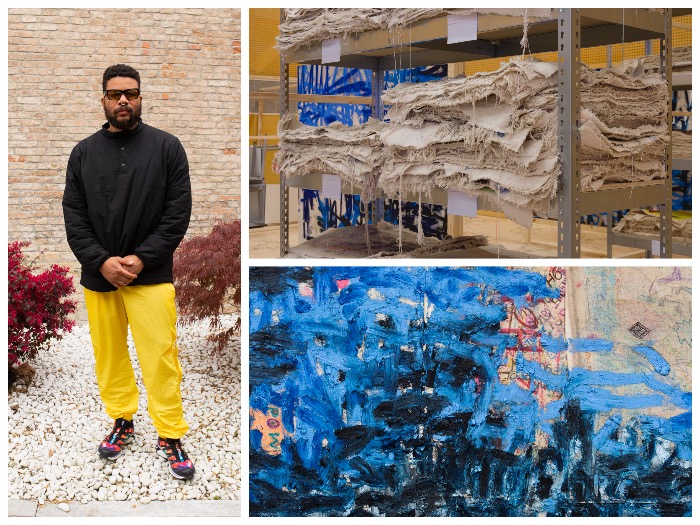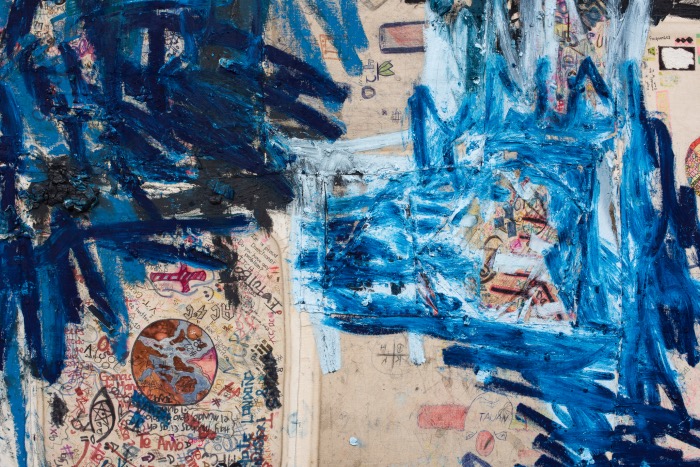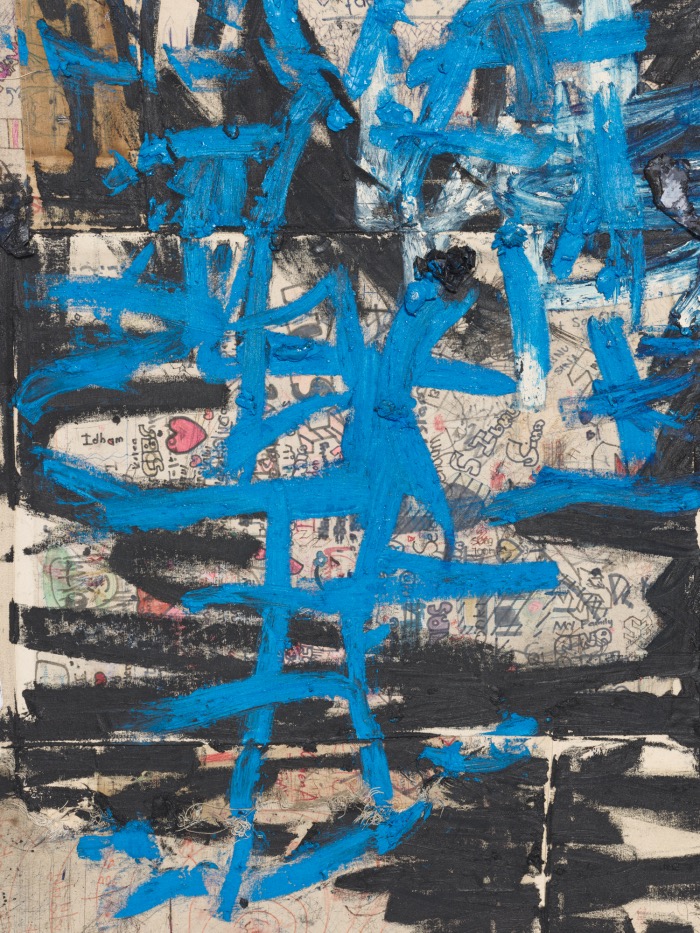
ENERGY AND COLOUR IN THE WORKS OF OSCAR MURILLO
There is an energy in the works of Oscar Murillo that hardly leaves one indifferent.
Born in 1986 in La Paila, Colombia, Murillo lives and works in several countries and has won numerous international awards, such as the prestigious Turner Prize in 2019.
His works are characterised by dense, bold colour that seems to want to explode sooner or later to flood the world.
The works of Oscar Murillo

Oscar Murillo, disrupted frequencies (Colombia, Brazil, Turkey, China), 2013-2019 (detail)
Ballpoint pen, fountain pen, graphite, felt tip pen, highlighter pen, permanent marker, paint, crayon, staples, natural pigments, debris, oil, oil stick and other mixed media on canvas 190x220cm
Photo by Tony Prikryl. Courtesy the artist and Aspen Art Museum
Oscar Murillo has created a visual language that includes recurring elements and motifs, black draperies, large canvases made of fragments stitched together, wooden and metal structures, sculptures that seem to be made of stone and are instead made of corn and clay.
All the elements that recur in Oscar Murillo’s works fit into a versatile style that includes painting, video, room-sized installations and actions.
All of Oscar Murillo’s works can be understood as part of a long, evolving investigation into the concept of community, influenced by personal and intercultural ties and the idea of continuous transnational movement, which has become an integral part of the artist’s practice.
The colour but also the abstract elements are reminiscent of painterly expressionism, although Oscar Murillo adds overlaps, seams and transparencies.
The innovative aspect of his works is certainly the use of dense colour and the inclusion of stitched elements.
Oscar Murillo’s latest solo exhibitions have taken place all over the world, from the Fondazione Memmo in Rome to the K11 Art Museum in Shanghai, China.
In 2022 he is in Venice for Oscar Murillo. A STORM IS BLOWING FROM PARADISE in which he proposes a global art installation.

OM 1583, disrupted frequencies (Colombia, China, Nepal, Ghana, Egypt, Malaysia), 2013-2021, 155 x 247 cm
.


Vista la mostra a Venezia: lungimirante e coraggiosa l’ idea di dare spazio alle mani e all’ estro di giovani di tutto il mondo,in un contesto cosi importante come la scuola.
Sono un’ insegnante ed ho visto nelle tele le storie dibambine e bambini, ma anche i loro diversissimi mondi, i sogni e le realtà in cui vivono.
Complimenti!
Questa è davvero una mostra da vedere perchè le emozioni che danno le opere dal vivo sono intense e difficilmente spiegabili.